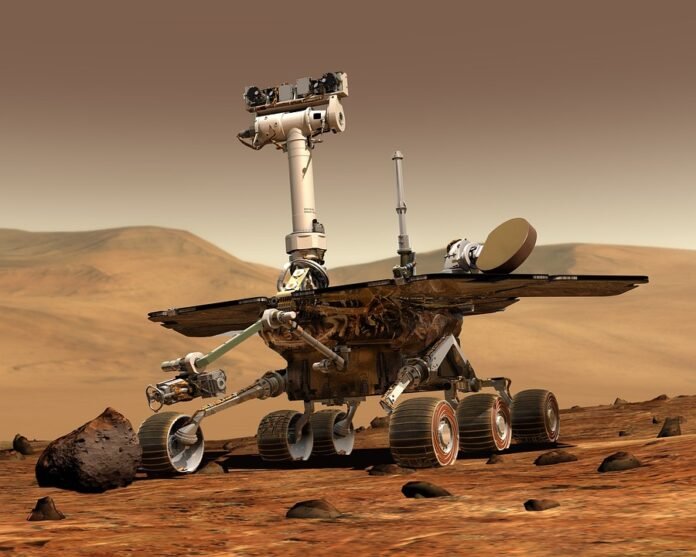Of course. Here is an article about the robots of today, framed by the theme “Not Sci-Fi Anymore.”
Not Sci-Fi Anymore: The Robots of Today
Forget the Terminators and C-3POs; the real robotic revolution is quieter, more specialized, and already transforming our world.
For decades, science fiction has painted a vivid picture of our robotic future. We imagined humanoid butlers like Rosie from The Jetsons, charming protocol droids like C-3PO, or, on the darker side, relentless cyborgs like the Terminator. We envisioned robots that would walk, talk, and think just like us, seamlessly integrating into our daily lives as companions or adversaries.
The reality, as it turns out, is both less dramatic and infinitely more practical. The robot revolution is not coming; it’s already here. It’s just not happening with a cinematic bang. Instead, a quiet army of specialized machines has been steadily integrating into every facet of our society, performing tasks with a level of precision and endurance that humans simply can’t match.
The robots of today don’t look like us, and they don’t want to be our friends. Their genius lies not in their personality, but in their purpose.
The Invisible Workforce: Factories and Warehouses
The most significant robotic workforce operates largely out of sight. Step into any modern car factory, and you won’t see an army of welders in protective gear. You’ll see a ballet of massive, articulated arms. These robots, like those from companies like KUKA or FANUC, lift, weld, and paint with tireless, micron-perfect precision. They don’t get tired, they don’t need breaks, and they have been the backbone of modern manufacturing for years.
More recently, this automation has flooded the world of logistics. If you’ve ever wondered how your online order can arrive at your door in a day, thank a robot. Inside sprawling fulfillment centers for companies like Amazon, squat, puck-like robots named Kiva scurry across the floor. They navigate a complex grid, lifting and transporting entire shelves of products to human pickers. They are the unsung heroes of e-commerce, a hive mind focused on one thing: efficiency.
Coming Home: The Domestic Drone
While we may not have a Rosie to cook our meals, robots have successfully infiltrated our homes. The most common example is the robotic vacuum. The Roomba, once a novelty, is now a familiar household appliance, diligently mapping our living rooms and cleaning our floors while we’re at work. Its cousins mow our lawns, clean our pools, and even wash our windows.
These domestic bots embody the core principle of today’s robotics: they are single-task masters. They aren’t designed for conversation; they are designed to free up our most valuable resource—time.
Beyond the Human Limit: Healthcare and Exploration
Some of the most incredible robotic advancements are happening in fields where human limitations are most critical. In the operating room, surgical systems like the Da Vinci robot are not replacing surgeons, but augmenting them. Controlled by a human surgeon from a console, the robot’s multiple arms can make incisions and sutures with a steadiness and range of motion that no human hand can replicate, leading to less invasive procedures and faster recovery times.
Meanwhile, on another planet, NASA’s rovers like Perseverance and Curiosity act as our robotic proxies. These sophisticated mobile geology labs brave the hostile Martian environment, analyzing soil, capturing stunning images, and searching for signs of ancient life. They are explorers in the truest sense, going where no human can—yet.
A Glimpse of the Sci-Fi Future
Of course, the dream of the walking, dynamic robot is not dead. Companies like Boston Dynamics regularly capture the public’s imagination with viral videos of their creations. Atlas, a humanoid robot, can run, jump, and perform backflips. Spot, a dog-like quadruped, can navigate treacherous terrain, open doors, and carry payloads.
But even here, the application is practical, not social. Spot isn’t designed to be a pet; it’s used for inspecting dangerous construction sites, monitoring equipment in factories, and assisting first responders. Its form follows its function—four legs are simply better for navigating uneven ground.
The Real Robotic Revolution
The reason today’s robots don’t look like their sci-fi counterparts is simple: specialization beats generalization. Building a single robot that can cook, clean, drive, and hold a meaningful conversation is an astronomically complex challenge. It’s far more efficient to build one robot that excels at vacuuming and another that excels at welding.
Furthermore, the intelligence behind these machines is not the sentient consciousness of science fiction. It’s the power of advanced algorithms, machine learning, and powerful sensors. A warehouse robot doesn’t know it’s carrying a shelf; it’s following a complex set of instructions to navigate from point A to point B.
So, while we were busy looking to the horizon for a walking, talking metal companion, the real robotic revolution was quietly happening under our feet, behind warehouse walls, and in our operating rooms. It may not be the future we were promised in the movies, but it’s a future that’s already making our world more efficient, safer, and more connected than ever before. The robots are here, and they’re here to work.

